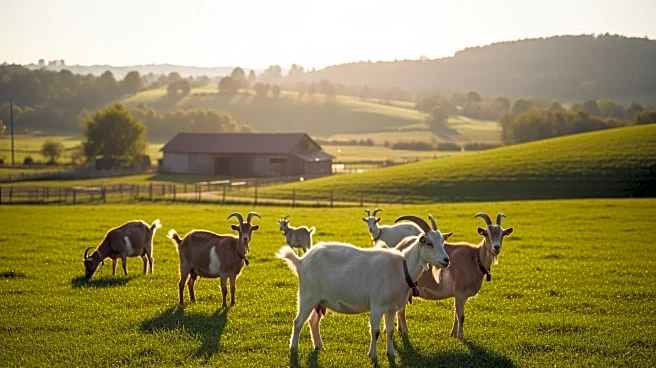What's Happening?
Beth Bohnert, a farmer in Tennessee, is raising goats specifically for cashmere production. Unlike typical wool-producing animals, cashmere goats are not a specific breed but a type of goat known for their
fine undercoat. The cashmere fiber is highly coveted due to its softness and luxurious feel, which is determined by the diameter of each fiber. To qualify as cashmere, the fiber must be under eighteen-and-a-half microns in diameter. Bohnert collects the cashmere by brushing the goats when they naturally shed their undercoat annually. It takes the fibers from four goats over a year to produce enough cashmere for a single adult sweater, explaining the high cost of cashmere garments.
Why It's Important?
The production of cashmere in the U.S. represents a niche but valuable segment of the agricultural industry. Cashmere's luxurious qualities make it a sought-after material in the fashion industry, driving demand for high-quality fibers. Farmers like Bohnert contribute to the diversification of agricultural practices by focusing on specialty fibers, which can offer higher profit margins compared to traditional livestock farming. This approach also highlights the importance of sustainable and ethical farming practices, as cashmere is collected through natural shedding rather than shearing, reducing stress on the animals.
What's Next?
As the demand for cashmere continues to grow, farmers may explore expanding their herds or improving breeding practices to enhance fiber quality. The industry could see increased investment in testing facilities to ensure fiber standards are met, potentially boosting the U.S. cashmere market. Additionally, there may be opportunities for collaboration with fashion brands seeking sustainable and ethically sourced materials, further integrating cashmere into mainstream fashion.
Beyond the Headlines
The cashmere industry faces challenges such as maintaining ethical standards and ensuring environmental sustainability. The focus on natural shedding and specific dietary needs for cashmere goats underscores the importance of responsible farming practices. As consumers become more aware of the origins of their clothing, the demand for ethically produced cashmere could drive changes in industry standards, promoting transparency and sustainability.











